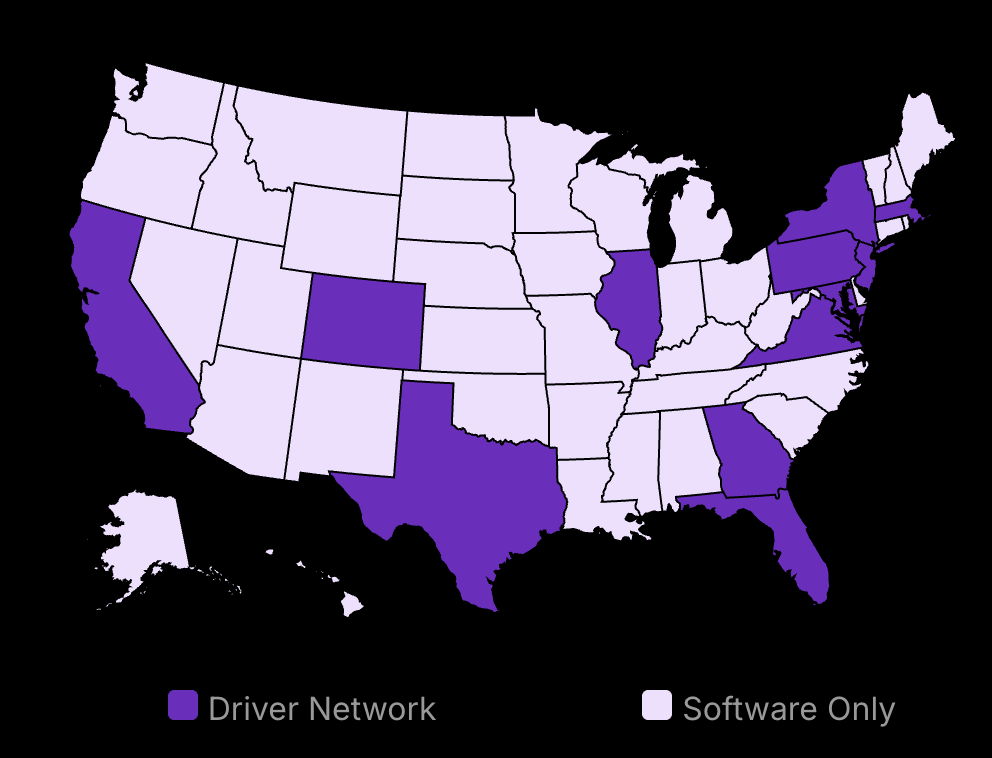In 2025, while the battle for exceptional employees isn’t fought with salaries alone, In 2025, while the battle for exceptional employees isn’t fought with wages alone, employers offer unemployment benefits alongside unemployment insurance benefits, as well as employee benefits, as a vital component. The companies winning top talent are those offering thoughtful employer benefits packages that speak directly to what today’s professionals truly value.
When Jessica left her senior developer position at a Fortune 500 company for a smaller startup offering 15% less base pay, her colleagues were shocked. Her explanation? “Their attractive benefits package addressed what matters in my life—mental health support, flexible work arrangements, dental insurance, child care assistance, and a sabbatical program. The salary difference became irrelevant when compared to the competitive benefits package they offered .”
This story isn’t unusual anymore. According to recent data, 78% of employees would consider a lower-paying job if it offered superior benefits aligned with their personal needs. Yet many businesses still build benefits packages based on outdated assumptions, often overlooking legally required benefits.
The truth is uncomfortable: your current benefits package might be actively driving away the very people you need to hire.
Benefits aren’t just perks—they’re powerful statements about your company’s values, including wellness benefits, and how you view the relationship between work and life. When done right, they create emotional connections that salary increases simply cannot match.
Does your benefits strategy reflect what common benefits employers and talented employees truly value in today’s talent market? Or are you still offering the same package from five years ago while wondering why recruiting has become increasingly difficult, especially when certain benefits are missing?
This guide walks through creating a benefits package that doesn’t just check boxes but genuinely resonates with the professionals you want to attract. We’ll explore concrete steps any business can take—regardless of size or budget—to develop benefits that matter in 2025.

Lower your delivery costs by 23%
How we reduce costs:
- No delivery vehicle expenses
- Optimized local routes
- Pay-per-delivery model
- Average 23% delivery cost reduction
Step 1: Assess Competitive Employee Benefits Package Analysis
Research what your competition offers to stay relevant in the talent market.
Build packages around what employees want, not what you think they want
Data-driven decisions lead to more cost-effective and appreciated benefits
Research Industry Standards About Employee Benefits Package
Beginning a benefit package analysis requires solid data about standard offerings in your industry. The landscape of employee benefits has expanded dramatically in recent years. According to the SHRM Employee Benefits Survey, the number of distinct benefits offered by U.S. employers has grown from 175 in 2022 to 216 by 2024—a 23% increase. This expansion shows how companies are adapting to changing workforce expectations.
You can start by collecting data from industry reports, professional associations, and business networks. Sources like the Society for Human Resource Management (SHRM), Bureau of Labor Statistics, and industry-specific associations publish regular reports on benefit trends, including flexible spending accounts. These resources provide benchmarks for what companies similar to yours offer. Pay attention to the core benefits that remain consistent across your industry—typically health insurance, retirement plans, paid time off, and life insurance—as these form the foundation of any competitive package.
Beyond these basics, identify emerging trends that might soon become industry standards. For example, mental health support has shifted from a nice-to-have perk to an essential benefit. Financial wellness programs that help employees manage student loans, build emergency savings, and plan for retirement are gaining traction. It is better to be particularly attentive to employee benefits that address work-life balance, including remote work, child care expenses, and short-term disability insurance, as these often influence job satisfaction and retention rates significantly.
Evaluate Competitors’ Offerings
Analyzing what your direct competitors offer gives you insight into the benefits battlefield where you compete for talent. Begin by creating a comprehensive list of your top competitors for talent, not just companies in your exact business line, but any organization recruiting from the same talent pool. For each competitor, document their complete benefits package using information from their career pages, job postings, including job offer, employee review sites like Glassdoor, and social media.
Create a comparison matrix showing which benefits each competitor offers and at what level. Pay special attention to benefits that competitors prominently feature in their recruitment materials—these are likely the perks they’ve found most effective for attracting candidates and retaining employees. Note the language they use to describe benefits, as this can reveal how they position themselves to potential employees.
According to recent industry reports, flexible work arrangements have become standard among most employers in 2025, especially regarding compliance with the federal minimum wage. Choice-based benefits and lifestyle spending accounts (LSAs) that allow employees to allocate funds toward remote work wellness, professional development, or home office equipment are increasingly common differentiators. If your competitors offer these benefits and you don’t, as many employers have, you may be at a disadvantage in recruitment.
Conduct Employee Surveys
The most effective benefits packages address the actual needs of your workforce, including legally mandated benefits, not assumptions about what they might want. Systematic employee feedback collection through surveys, focus groups, and one-on-one discussions provides critical insights into benefit preferences across different employee segments.
Design comprehensive surveys that cover both satisfaction with current benefits and interest in potential new offerings. You can use rating scales for quantitative data and open-ended questions for qualitative insights. Segment results by demographics like age, family status, department, tenure, and job level to identify patterns in preferences. For example, employees with young children might prioritize childcare support and flexible scheduling, while those nearing retirement might value enhanced 401(k) matching.
The 2025 benefits landscape shows growing demand for personalization, with employees seeking options that fit their life stage and personal circumstances. Recent surveys indicate strong preferences for benefits that address holistic well-being, including mental health support, work-life balance programs, and financial wellness resources. Only 16% of employers believe their current well-being programs meet employee needs, creating an opportunity for companies to differentiate through thoughtful program design that helps retain employees.
Analyze Employee Benefits Cost Ratios
Creating an effective benefits package requires balancing employee desires with financial reality. For each potential benefit, calculate both implementation costs and expected return on investment through improved recruitment, retention, and productivity.
You can start by gathering comprehensive cost data for each benefit under consideration. Include direct costs like premiums or program fees, administrative costs for management, and potential tax implications. Then estimate the potential benefits in quantifiable terms where possible: reduced turnover costs, decreased recruitment expenses, improved productivity, and reduced absenteeism.
According to health insurance benefits data for 2025, fewer than half of large employers plan to cut costs by raising deductibles or copays, indicating a focus on maintaining or enhancing employee benefits rather than reducing them. This suggests that companies see value in benefit investments even amid economic pressures. For benefits where direct ROI is difficult to calculate, consider proxy metrics like usage rates, employee satisfaction scores, and feedback from exit interviews.
Identify Gaps and Opportunities For Additional Benefits
The final step in your competitive benefits analysis is identifying the gaps between your current offerings, competitor packages, and employee preferences. These gaps represent your greatest opportunities for improvement.
Create a comprehensive gap analysis document that lists each benefit area and notes the differences between your offerings and benchmarks. Prioritize gaps based on several factors: the size of the disparity, importance to employees, impact on recruitment and retention, implementation cost, and alignment with company values and culture.
The rapid growth in distinct benefits (from 175 to 216 in just two years) shows how quickly the benefits landscape is evolving. Niche and emerging benefits like menopause support and grandparent leave have appeared for the first time in 2024, alongside retirement benefits, indicating how companies are responding to specific employee needs. This presents an opportunity to identify underserved needs in your workforce that competitors haven’t yet addressed.
Step 2: Design Top Talent Attraction Strategies
Design benefits that align with your core values to attract the right talent
Create personalized options that address the specific needs of different employee groups.
Balance competitive offerings with financial sustainability for long-term success.
Align Sought-After Employee Benefits with Company Values
Benefits packages aren’t just a list of sought-after employee benefits; they’re a statement about what your company stands for. They’re a statement about what your company stands for. When benefits such as life insurance directly reflect your organizational values, you attract candidates who share those values and fit your culture.
Start by reviewing your company’s mission statement and core values. If your organization values work-life balance, your benefits should include flexible scheduling, generous PTO, and parental leave policies. If innovation is central to your identity, consider offering continuing education stipends, conference attendance budgets, and dedicated time for personal projects.
This alignment creates authenticity in your employer brand. Research shows candidates can quickly spot disconnects between what companies claim to value and what their benefits support. For example, a company that claims to value employee well-being but offers minimal health coverage, no mental health support, and lacks robust support services will struggle to attract health-conscious professionals. According to recent data, employers are increasingly expected to offer benefits that reflect their organizational culture, with a particular focus on employee well-being and support.
Identify Employee Benefits That Attract Top Talent
Today’s competitive talent landscape requires benefits that speak directly to what high-performers want. According to Paychex’s 2025 Priorities for Business Leaders survey, while 49% of employers are prioritizing increased pay, 41% are focusing on improved benefits, and 40% are emphasizing flexible work schedules.
The most sought-after talent typically looks beyond salary to evaluate total compensation packages. Benefits that consistently appeal to top performers include:
Genuine flexibility in work arrangements
Robust professional development opportunities
Comprehensive healthcare that includes mental health support
Meaningful equity or profit-sharing plans
Generous paid time off policies
What distinguishes average benefits packages from exceptional ones is the depth of offerings. Rather than providing basic health insurance, leading companies offer plans with low deductibles, coverage for specialized treatments, and telehealth options. Instead of minimal PTO, they create sabbatical programs for long-term employees.
Create A Comprehensive Benefits Package
A truly comprehensive benefits package addresses the complete spectrum of employee needs—physical, mental, financial, and professional. The most effective packages consider both immediate needs and long-term security.
Essential components include:
Health insurance with multiple plan options
Retirement plans with matching contributions
Paid time off (vacation, sick leave, personal days)
Mental health resources
Professional development funds
Life and disability insurance
Wellness programs
What distinguishes exceptional packages is personalization, especially in how they cover medical expenses. According to recent trends, personalized benefit packages are gaining popularity, including those that offer health insurance and comply with the Affordable Care Act and Medical Leave Act, with employees seeking options that align with their life stages and personal circumstances. This includes choice-based benefits plans covering specialized needs like pet insurance or fertility treatment coverage, lifestyle spending accounts for wellness or home office equipment, and customizable health plans with tiered options.
The most forward-thinking employers are moving beyond standardized offerings to create modular benefits systems where employees can allocate resources based on their unique situations. For instance, a young employee might direct more resources toward student loan repayment, while an employee with a family might prioritize dependent care benefits.
Develop Competitive Compensation Structures
While benefits are crucial, they must complement competitive base compensation. Salary benchmarking should be an ongoing process, not an annual event. Subscribe to multiple compensation databases and regularly review market rates for key positions.
Develop transparent salary bands with clear progression criteria. When employees understand exactly what drives compensation increases, they’re more likely to stay engaged. Transparency also builds trust—a key factor in retention.
Consider alternative compensation models like:
Skills-based pay that rewards specific capabilities rather than job titles
Performance-based bonuses tied to objective metrics
Profit-sharing programs that align employee interests with company success
Spot bonuses for exceptional contributions outside normal job duties
The most sophisticated compensation structures balance immediate rewards with long-term incentives. Short-term cash bonuses maintain motivation, while equity or deferred compensation plans encourage commitment.
Implement Meaningful Work-Life Integration Programs For Employee Retention
Work-life integration has replaced work-life balance as the preferred framework. Rather than treating work and personal life as opposing forces that must be “balanced,” integration acknowledges that the two domains inevitably overlap and influence each other.
Effective work-life integration programs include:
Flexible scheduling that accommodates personal obligations
Generous parental leave for all parents (regardless of gender)
Caregiving support for those with aging parents or other dependents
Sabbatical programs for long-term employees
Mental health days are separate from regular sick leave
“No meeting” days to allow for focused work
Technology policies that respect off-hours boundaries
Step 3: Implement Employee Benefits Trends 2025
Leverage 2025’s newest mental health and digital wellness tools to support employees
Create eco-friendly benefits that align with sustainability goals
Build flexibility into your benefits program to adapt to rapidly changing trends
Incorporate the Trending 2025 Benefits
Mental health support has moved beyond basic offerings to become a central focus for employees and employers alike, especially in managing medical bills. In 2025, comprehensive mental health benefits that cover qualifying medical expenses, including health insurance plans, are no longer optional—they’re expected. Data shows that 52% of employers are now focused on supporting employees’ physical, mental, and financial well-being, reflecting a strong trend toward holistic health benefits.
To implement effective mental health support initiatives, start by evaluating your current mental health offerings. Consider adding or expanding teletherapy services, which provide employees with convenient access to licensed therapists from any location. Virtual counseling sessions have become increasingly popular due to their accessibility and reduced stigma compared to in-person appointments. Employee Assistance Programs (EAPs) should be enhanced to include more comprehensive mental health resources, including suicide awareness training for managers. Regular mental health check-ins and anonymous surveys can help gauge the effectiveness of these initiatives and identify areas for improvement.
Promote Sustainability in Benefits
Eco-friendly benefits are gaining traction as employees increasingly value working for companies that demonstrate environmental responsibility. Implementing sustainable benefits, including programs that provide health insurance, serves two purposes: it reduces your company’s environmental footprint while attracting and retaining environmentally conscious talent.
You can start by offering eco-friendly commuting options. This can include subsidized public transportation passes, bicycle commuting incentives, electric vehicle charging stations, or carpooling programs. Companies that have implemented these programs report not only environmental benefits but also reduced employee stress and increased punctuality. Consider creating a transportation survey to understand current commuting patterns before designing these initiatives.
Stay Adaptable To Change Employee Benefits Package
The benefits landscape evolves rapidly, and companies that succeed in attracting and retaining top talent maintain flexibility in their offerings. Create a benefits structure that can adapt to emerging trends and changing employee needs.
To stay adaptable, establish a regular benefits review process. Schedule quarterly reviews of benefits usage data and emerging industry trends. Form an employee benefits committee with representatives from different departments, age groups, and life stages to provide diverse perspectives on potential changes. This approach ensures that your benefits package stays relevant and responsive to how you manage employee benefits and actual employee needs, rather than blindly following industry trends.
Employee benefits are at the core of attracting and retaining top talent for businesses of all sizes. From new compliance regulations to shifting workforce priorities, employers face challenges in designing effective employee benefits package programs.”
Personalize Employee Benefits for Different Employee Groups
One size doesn’t fit all when it comes to benefits in 2025. Employees at different life stages and with different priorities value different benefits. Creating personalized options shows that you understand and respect this diversity.
You can begin by segmenting your workforce into key demographic groups based on factors like age, family status, career stage, and personal interests. For each segment, identify the benefits that would most likely meet their specific needs. For example, younger employees might prioritize student loan repayment assistance and professional development opportunities, while employees with families might value childcare support and flexible scheduling more highly.
Measure and Communicate Employee Benefits Effectiveness
Implementing new employee benefits trends is only valuable if employees understand and use them. Develop clear communication strategies and measurement tools to ensure your investments pay off.
Start by creating a comprehensive benefits communication plan. You can use multiple channels, including email, intranet, physical materials, and in-person or virtual information sessions. It is best to create easy-to-understand guides that clearly explain how to access and use each employee benefit. Consider developing personas or case studies that show how different employees might utilize the benefits package to its fullest.
Employee Benefits Package For Business
Creating an employee benefits package that attracts top talent isn’t just about competing in today’s job market—it’s about building the foundation for your company’s future success. By following the four-step process outlined in this guide, you’re now equipped to develop a benefits strategy that focuses on offering employee benefits that align with both your business goals and employee needs.
Remember that the most effective employee benefits packages balance competitive offerings with financial sustainability. They reflect your company values while addressing what matters most to retain talented employees and current team members. In 2025’s rapidly changing workplace, this means staying alert to emerging trends in mental health support, flexibility, additional benefits, and sustainability.
The time and resources you invest in designing a thoughtful employee benefits package will pay dividends through improved recruitment success, higher employee morale, retention rates, and a stronger company culture. As you implement your new strategy, including tuition reimbursement,t ensure that updates are reflected in the employee handbook, continue gathering feedback, and making adjustments based on what you learn.
Your benefits package is more than a list of perks and nonwage compensation —it’s a statement about how you value the people who drive your business forward. With careful planning and regular refinement, including a strong retirement package, you’ll create a benefits program that truly makes your company stand out to the talent you need.



























